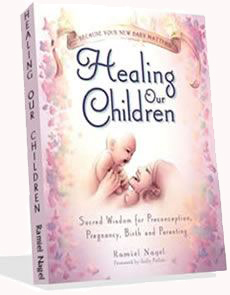Why Grains Should Be Avoided During Pregnancy
 Recently, the problem with eating grains is becoming more widely know, as more people are suffering from Celiac disease, which is a health condition caused by gluten found in grains or any product that contains grains. Despite the growing concern about grains, the advice we usually receive from the government and food manufacturers is that it is fine to eat grains, you just need to be sure that you are eating the whole grain – instead of the stripped-down version that is used in white flour products. But, this isn’t true either. Whole wheat products still contain gluten, which will cause Celiac disease sufferers to be sick. The surprising truth that is coming out is that whole grain products of almost any kind actually contain toxins, and these toxins are terrible for anyone – even for those people who do not suffer from Celiac disease.
Recently, the problem with eating grains is becoming more widely know, as more people are suffering from Celiac disease, which is a health condition caused by gluten found in grains or any product that contains grains. Despite the growing concern about grains, the advice we usually receive from the government and food manufacturers is that it is fine to eat grains, you just need to be sure that you are eating the whole grain – instead of the stripped-down version that is used in white flour products. But, this isn’t true either. Whole wheat products still contain gluten, which will cause Celiac disease sufferers to be sick. The surprising truth that is coming out is that whole grain products of almost any kind actually contain toxins, and these toxins are terrible for anyone – even for those people who do not suffer from Celiac disease.
Why Grains are Toxic to Humans
Most of the toxins that are in grains are found in the germ of the plant- or grain embryo. These toxins include certain substances such as phytic acid and agglutinin. When humans consume phytic acid, it can actually prevent the absorbtion of essential nutrients, especially iron. Agglutinin can produce inflammation within the intestines and in the body. Additionally, grains contain tannins, which are substances that can damage the gastrointestinal tract lining and even prevent children from growing at a healthy pace!
Choosing Toxin-Free Grains
Once you understand which grains are toxic, it’s actually really easy to eat grains without the toxic overload that can be causes in the body when the grains are not properly prepared. If you want to avoid the toxicity, then one of the best ways to prepare grains is by removing the bran and then allowing the grain to ferment before eating. Additionally, the grains can be sprouted before cooking with them. However, if you plan to eat grains then it’s important to learn about the different types of grains, seeds, and nuts. Each one is unique, and their different structures and contents requires different processes and preparation.
One excellent way to get rid of the toxins that are present in some types of grain, is by using the grains in sourdough bread. When sourdough bread is made, the yeast and a souring process ferments the grains before the bread is baked. This fermentation process helps to get rid of many of the toxins and impurities that are found in the grain, and the bread is delicious without the toxicity.
Because toxic grains prevent the body from absorbing nutrients properly, it’s extra important for pregnant women to monitor their diet and only eat toxin-free grains. The grains that are consumed must be properly processed, in order to remove phytic acid and the other toxic substances. If you are pregnant or trying to conceive, check out for more tips and tricks about how to properly process grains in order to improve their nutrition and prevent harmful side effects for your body and your baby. The book is packed with great information about grains and other foods that you should be eating during pregnancy, and it it also shows you how to get these foods in their most nutritious form.
Photo Credit: Dag Endresen from







